#President Franklin d. Roosevelt
Text

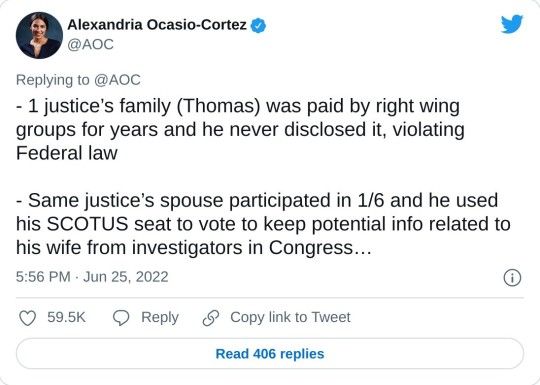
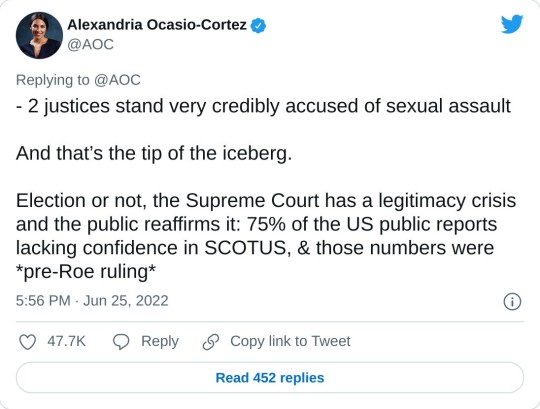
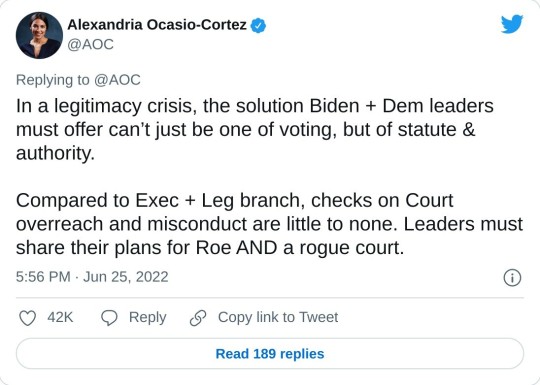
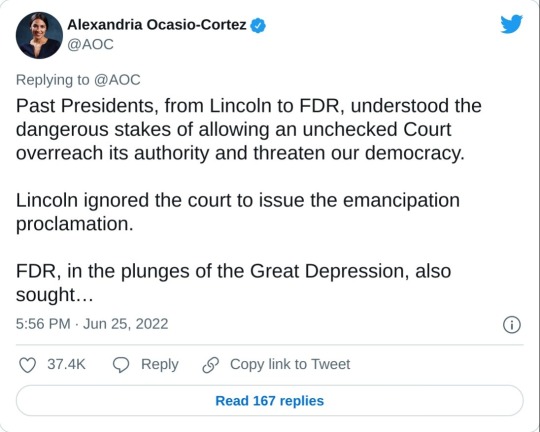





#us supreme court#2022 elections#2022 midterms#us congress#us house of representatives#us senate#biden administration#rep. alexandria ocasio cortez#new york#us history#President Franklin d. Roosevelt#president abraham lincoln#abortions#abortion bans#roe v. wade#scotus#us politics#news#twitter#tweet#2022#progressives#progressivism#democrats
16K notes
·
View notes
Text
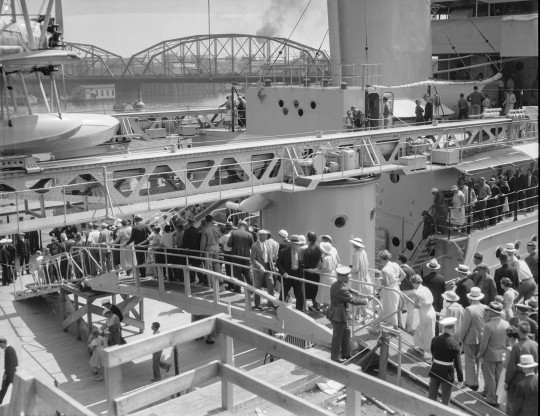
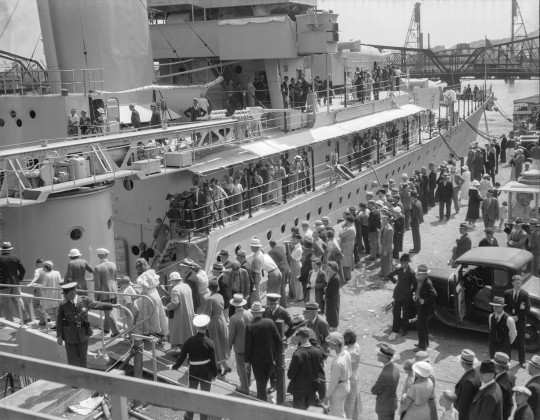
Crowds touring USS Houston (CA-30) in Portland, Oregon, after President Franklin D. Roosevelt’s arrival on August 4, 1934.
University of Oregon Library: 371N3698, 371N2186
#USS Houston (CA-30)#USS Houston#Northampton Class#Cruiser#Warship#Ship#President Franklin D. Roosevelt#FDR#President#Portland#Oregon#United States Navy#U.S. Navy#US Navy#USN#Navy#August#1934#interwar period#West Coast#my post
9 notes
·
View notes
Text

Moses Soyer’s oil painting, Young Girl, is one of the works on view in A New Deal: Artists of the WPA from the CMA Collection at Canton Museum of Art. The exhibition is a reminder of one of the best social programs ever created by the US government and the positive impact it had on the country during one of its hardest periods.
From the museum about the exhibition-
Against the backdrop of severe economic strife caused by the Stock Market Crash of 1929, President Franklin Roosevelt created the Works Progress Administration (WPA), which put roughly 8.5 million Americans, including more than 173,000 men and women in Ohio, to work building schools, hospitals, roads and more. Within the WPA was The Federal Art Project (FAP) which provided employment for artists to create art for municipal buildings and public spaces. The FAP had a non-discrimination clause that meant it attracted and hired artists of color and women, who previously received little attention in the art world. The only guidance the government offered about subject matter was to depict the “American scene” and stipulated no nudity or political issues. The goal was for artists to help the United States develop its own distinct American style of art, especially as artists in other parts of the world were forbidden freedom of expression and ordered to create artworks that projected the beliefs of their governments.
Though the WPA artists in the United States shared the common goal of capturing life in all its variety and promoting national pride, they each had different approaches, and many modified their typical subject matter to fit whatever project they were assigned. The arts before and after the New Deal relied on private patronage and the philanthropy of wealthy and elite institutions: galleries, museums, dealers. But during the WPA, art wasn’t a luxury good, it was seen as an essential part of our democracy. Artists were seen as professional workers who were making important and significant contributions to American life. The artworks made under the WPA became the collection of the American people and were put in public collections – hospitals, schools, post offices, housing projects, etc. – ensuring they were part of communities. The arts were seen as an important part of a democratic society and the American way of life, with a richness of experience and accessibility to culture.
While artists were offered opportunities through the WPA, they were far from immune to the distress caused by the Depression, and many still struggled to make a living. Will Barnet detailed a bleak scene he came across, saying:
“It was like a war going on. There were bread lines and men lined around three, four, five, six blocks waiting to get a bowl of soup. It was an extraordinary situation. And one felt this terrible dark cloud over the whole city.”
Moses Soyer also described the hardships artists experienced, saying,
“Depression–who can describe the hopelessness that its victims knew? Perhaps no one better than the artist taking his work to show the galleries. They were at a standstill. The misery of the artist was acute.”
The FAP supported the creation of thousands of works of art, including more than 2,500 murals that can still be seen in public buildings around the country. The FAP also supported art education and outreach efforts, including traveling exhibitions and art education programs for children. The WPA and FAP had a significant impact on the American art scene, and many of the artists who participated in the program went on to become important figures in the art world.
A New Deal: Artists of the WPA from the CMA Collection highlights the lives of artists from our Permanent Collection who worked for the WPA, and in doing so, fostered resilience for a struggling nation. You will learn about the projects they worked on, the subjects they were interested in, and how their own lives were affected by the Depression. Each of these artists helped to foster the nation’s spirit and prove that even in the darkest of times, art serves as a uniting force to collectively lead people into a brighter future.
And about Moses Soyer and his painting from the museum-
The Depression set the mood for most of Soyer’s art expression, and his portraits of people seem to be preoccupied with a sad secret. His portraits were often of solitary fi gures, using professional models or his friends, capturing in these paintings the spirit of his sitters, their dreams or disillusionment. He is best known for his introspective fi gure paintings of weary, melancholy women in muted colors, matching the mood of his sitters with the pigment in his paint. He was inspired by artist Edgar Degas, who used color expressively.
On the museum’s website you can find both the artwork on display for the exhibition and also a gallery of the museum’s entire collection organized into several categories.
#Moses Soyer#Art#Canton Museum of Art#Art History#Art Shows#Canton Art Shows#Works Progress Administration#Drawing#Federal Art Project#President Franklin D. Roosevelt#Franklin D. Roosevelt#Government Programs#Great Depression#History#Ohio Art Shows#Painting#The New Deal#WPA
0 notes
Text
What DO Republicans Want???
Don’t you sometimes wonder just what the Sam Hell it is the Republicans want? They seem to stand against everything that would help people, and yet they stand for … virtually nothing other than bigotry in its every form. In a recent newsletter, Heather Cox Richardson gives some insight into their goals … to return this nation to its pre-1933 state where, as Heather says, “Children worked in the…
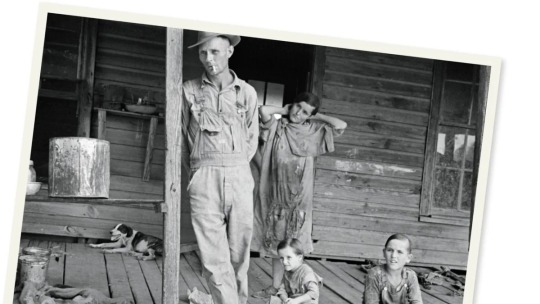
View On WordPress
#Grover Norquist#Heather Cox Richardson#New Deal#President Franklin D. Roosevelt#President Joe Biden#Republican Study Committee#taxes on the wealthy
0 notes
Text
Memorial Service for Walter Mondale
On May 1, 2022, a memorial service for Walter “Fritz” Mondale was held at the University of Minnesota’s Northrup Auditorium. He had died on April 19, 2021, but a service at that time was not possible because of the COVID-19 pandemic, and his son, Ted, said his father “didn’t want to lie in state; he didn’t want to be in Washington, he wanted to be here with you” because “you reflected what he…
View On WordPress
#Jon Meacham#Josie Johnson#Lillian Hochman#Minnesota Governor Arne Carlson#Minnesota Governor Tim Walz#President Barack Obama#President Bill Clinton#President Franklin D. Roosevelt#President Jimmy Carter#President Joe Biden#Professor Larry Jacobs#Rev. Tim Hart-Andersen#Ted Mondale#The Great Depression#The musical "Annie"#The song "Tomorrow"#U.S. Senator Amy Klobuchar#U.S. Senator Tina Smith#University of Minnesota#University of Minnesota President Joan Gabel#Walter F. Mondale#William Mondale
1 note
·
View note
Note
At the FDR Presidential Library, I read that the British press considered it crass and undignified for the Roosevelts to share hotdogs with the King and Queen of England when they visited Hyde Park. Are there any other fun anecdotes about Presidents serving the wrong food to dignitaries?
FDR also served them beer with their hot dogs! From the accounts that I've read, King George VI enjoyed them and asked for more. Queen Elizabeth (that's the Queen Mother -- Elizabeth II's mom) had to ask for directions about how to eat the hot dogs, but apparently ended up using a knife and fork. Apparently, the King and Queen really appreciated the lack of formality in their visit to Hyde Park because it came on the heels of a very formal, month-long state visit to Canada. President Roosevelt and King George even went swimming together a couple of times in FDR's pool and went for a ride in FDR's custom-made car that allowed him to control everything with his hands due to his disability.
Off the top of my head, I can't think of any incidents where Presidents served the wrong type of food to guests. I'm sure it has probably happened over the years, but State Dinners are pretty meticulously planned by protocol officials on both ends. One story that I always liked was President Reagan noting in a diary entry that Prince Charles (now King Charles III) was served tea during a visit to Washington but had absolutely no idea what to do with it because it was served with a tea bag.
From Reagan's diary entry on May 1, 1981:
"Highlight was noon visit by Prince Charles. He's a most likeable person. The ushers brought him tea -- horror of horrors they served it our way with a tea bag in the cup. It finally dawned on me that he was just holding the cup & then finally put it down on a table. I didn't know what to do. Mike [Deaver] escorted him back to the W.H. and apologized. The Prince [said], 'I didn't know what to do with it.'"
#History#Presidents#Presidential History#Franklin D. Roosevelt#FDR#State Dinners#Presidential Protocol#King George VI#Prince Charles#King Charles III#Ronald Reagan#President Reagan
47 notes
·
View notes
Text
Happy Presidents Day! It's time for the results of the annual Presidential Greatness Project Expert Survey
So here are the five best and five worst presidents according to the 2024 survey. BTW, Grover Cleveland only gets counted once for this survey.
Here are the historians' collective rankings for the top five and bottom five.

I'm fully in agreement with #1 and #45.
The entire 12 page article (PDF) can be read here.
Lincoln, FDR, and Washington are in an exclusive group of greatness by themselves. Trump is in an exclusive group of odium all by himself. The ghosts of James Buchanan and Andrew Johnson are undoubtedly pleased that thanks to Trump, they'll never need to worry again about being considered the worst ever POTUS.
Some other tidbits from the survey.
Jimmy Carter (#22 overall) was chosen as the most underrated POTUS.
John F. Kennedy (#10 overall) was chosen as the most overrated.
The biggest rise in the rankings was by Barack Obama who rose 9 places since 2015.
The biggest decline goes to Andrew Jackson who tumbled 12 places since 2015.
Joe Biden is at #14 overall – in between John Adams and Woodrow Wilson. Though Biden is essentially tied with Adams; both having received scores of 62.66 points.
The ratings average which Republican historians gave to Biden (47.69) was significantly higher than the ratings average which Democratic historians gave to Trump (6.66). No, I didn't make up that 666. 👿
It's only history scholars who participated in this survey. They tend to take a longer view than most of us.
My biggest disagreements are that I would have placed Gerald Ford and John Quincy Adams higher and George W. Bush much lower.
A couple of articles about the 2024 rankings...
MAGA freaks out after Fox News reports Obama in top 10 presidents — and Trump in dead last
Presidential experts rank Biden 14th among presidents in survey, Trump comes in last
#presidents day#rankings of us presidents#potus#abraham lincoln#donald trump#joe biden#barack obama#jimmy carter#john f. kennedy#franklin d. roosevelt#george washington#john adams#woodrow wilson#james buchanan#andrew jackson#andrew johnson#john quincy adams#george w. bush#gerald ford#grover cleveland#election 2024
30 notes
·
View notes
Text

Happy President's Day 🇺🇲
George Washington who born February 22, 1732, had a successful liquor distiller business and was only a scholar in name because he never attended college.
Tidbits about other U.S. presidents:
•John Adams and Thomas Jefferson both died on July 4.
•James Madison was the shortest president.
•John Quincy Adams went skinny-dipping in the Potomac River daily.
•John Tyler was a father to 15 children.
•Abraham Lincoln was the tallest president at 6’4”, may have had Marfan Syndrome, a genetic disorder that causes people to be very tall, thin and long limbed.
•Andrew Johnson apparently cared for a family of White House mice, which he called “the little fellows.”
•Franklin D. Roosevelt was a movie buff.
•Gerald Ford used to be a model before president and a star football player at the University of Michigan he turned down offers from both the Detroit Lions and Green Bay Packers.
#president#love#presidents day#united states#holiday#john adams#thomas jefferson#james madison#john quincy adams#john tyler#abraham lincoln#andrew johnson#franklin d. roosevelt#gerald ford#george washington
9 notes
·
View notes
Text
Presidential Man Slut Round 1


Vote for who you think has the absolute sluttiest vibes! Learn more at the FAQ. This poll ends on Saturday, 25 February 2023.
Remember to reblog to make sure everyone gets a chance to vote. That’s democracy, babey!!!!
#fdr#franklin delano roosevelt#franklin d. roosevelt#franklin d roosevelt#potus#usa#actual polls#tumblr's sluttiest president
26 notes
·
View notes
Text
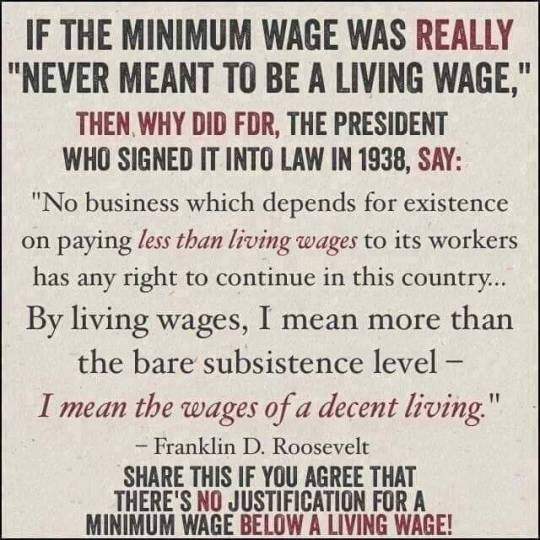
#us politics#president franklin d. roosevelt#us history#quotes#raise the minimum wage#wage gap#minimum wage#living wage#wages#1938#working class#workers#worker's rights#tax the billionaires
881 notes
·
View notes
Text
Some of the Button House as American Presidents 
Kitty: George Washington
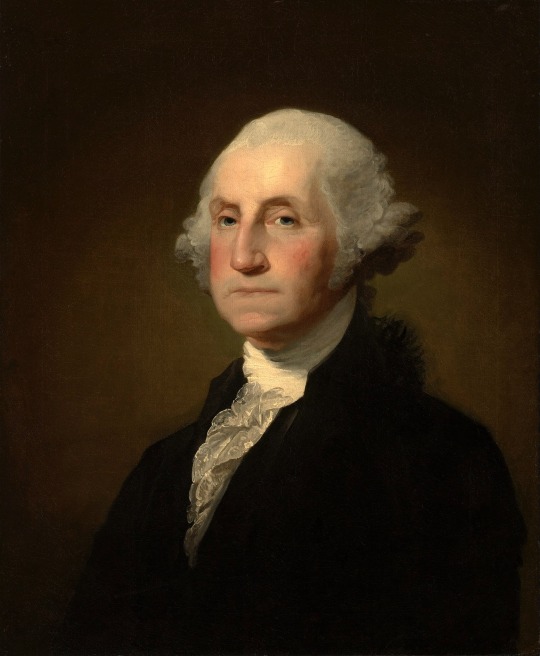
Thomas: James Monroe

Fanny: William Howard Taft

Captain: Franklin D. Roosevelt

Pat: Ronald Reagan

Julian: Bill Clinton
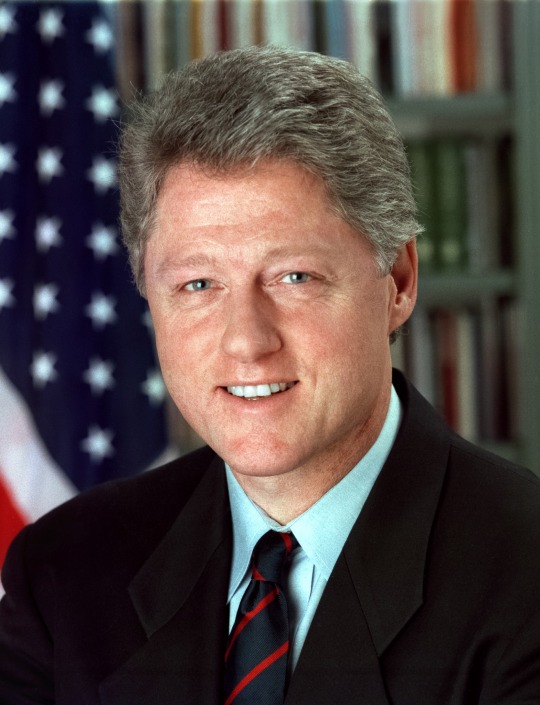
#james monroe#bbc ghosts#us presidents#us history#william howard taft#franklin d. roosevelt#ronald reagan#bill clinton#meme#george washington
17 notes
·
View notes
Text



Polish artist Arthur Syzk created this series, George Washington and His Times, for Max Jaffe of Vienna to mark the 1932 bicentennial of George Washington’s birth. The paintings were exhibited at the French Exposition in Paris. In 1935, Polish President Ignacy Mościcki purchased the set and presented it to President Roosevelt. In a letter of thanks, FDR wrote, “I am deeply grateful for this admirable collection of illuminated miniatures depicting incidents of our War for Independence in which Washington was so generously and admirably aided by Kosciuszko and Pulaski.” The paintings hung in the White House until 1941.
3 notes
·
View notes
Text

Franklin D. Roosevelt, January 30, 1882 – April 12, 1945.
11 notes
·
View notes
Text
'...The blockbuster science biopic Oppenheimer has been bringing the life story of the man who built the most destructive weapon on the planet. J. Robert Oppenheimer is a remarkable character in the film and I watched it myself to see how his story has been told. I’m not that enthusiastic on the study of nuclear physics myself but as science geek I was very curious to learn about his life and how the science was portrayed in the film.
What amazes me about the film is that it showed how Oppenheimer made incredible achievements in science but all his genius did was make him an instrument of destruction. Hence his namesake as the Father of the Atomic Bomb. His famous quote came from a Hindu scripture the Bhagavad Gita “Now I am become death, the destroyer of worlds”. Although Oppenheimer is the central character of the film and indeed the chief designer of the atomic bomb, the film also features several other scientists who were also the grand designers of the atomic age. There are many interesting and common features of them that they had in sync with each other in their intellectual genius. Each of them brought some contribution to this bomb making plan known as the Manhattan project. Although Oppenheimer himself was credited with creating the bomb several of the scientists were renowned in quantum physics. Neils Bohr, Howard Urey, Enrico Fermi, Glenn Seaborg, Isador Isaac Rabi, Joseph Rotblat, Richard Feynman and many more. 31 of them won Nobel Prizes in physics, chemistry, medicine and peace. Their contributions consisted of many different things like how much fissionable material they needed, the computations of how the atoms would fuse together, the extraction of plutonium from uranium, etc. Albert Einstein also featured in the film and was a Nobel prize winner himself in 1921, but did not participate in the Manhattan project because of his politics and pacifist beliefs. However he did co-write a letter to President Franklyn Roosevelt warning him that Nazi Germany could build a nuclear weapon of their own, and suggested that America builds it first. This was true because Germany was the intellectual centre of quantum physics that formed the basis of nuclear energy.
However most of these scientists were Jewish and since the Nazis purged the Jews from their homeland, they had scared them away and they lost all the valuable expertise they needed to make such a weapon. In fact most of the scientists on the Manhattan project were Jewish themselves. Oppenheimer among them. In later years the scientists involved in the study of radiation and nuclear energy called for global control of their science to avoid what they described as ‘a catastrophic abuse of intellectual creativity’. I’ve read Einstein’s book The General Theory of Relativity which formed the base science of atomic energy. I didn’t understand it very well but it gave me a decent understanding of what relativity is and the puzzles associated with it. The theory of relativity in it’s simplest form explains how time and space views the way particles of light move in geometric patterns. Hence the famous equation associated with relativity: E=mc squared. This explains that when the mass of an object multiplied by the speed of light (squared) it generates energy, as all things in life are made of energy from your own body to the stars in the sky. This helped physicists understand the way particles moved the way they do and it helped the scientists in atomic energy research develop the ability to fuse and split atoms. There is nuclear fission whereby a nucleus from an atom is released to collide with other atoms to release tremendous amounts of energy, as what happens in an atomic bomb. Then there is nuclear fusion whereby nuclei from two atoms are fused together to merge into a larger nucleus. This is the process by which stars form and generate energy.
Fission splits atoms while fusion joins atoms. Where this resulting entity is formed it’s got less mass because the density of the star decreases as the atoms merge together due to the nuclei discarding their protons and electrons. There is a practical application of this that can be replicated on Earth where physicists are attempting to create an artificial star and place it in a box to create unlimited clean energy. So far they are struggling to get the construction of the box right because it needs to replicate the environment of a star. Now at the time Oppenheimer had started the Manhattan project one junior called Richard Feynman was still doing his PhD. He was tasked with trying to separate two uranium isotopes from each other. By that time he was still a young physicist and this was his first big role in science, which was very unique for someone of Feynman’s age.
Before advanced computing machines were invented Feynman had to develop new methods for computing logarithms that humans can compute. It was a laborious process having to take so long to process the information by human computers, but it came in useful later when it was used by IBM for processing complicated equations. Feynman’s mathematical speciality in physics was instrumental to the computing age as it was to developing the atom bomb. However he was more focused on a bigger problem that was more to his interests in physics that needed to be challenged. After working at the Manhattan project Feynman decided to investigate a problem for the fun of it. He believed that tackling complex equations should be something done for fun, not just for a purpose like bomb making. One area of physics that Feynman took an interest in was quantum electrodynamics (QED). This described how light and matter interact and merged quantum mechanics with special relativity, the branch of physics that Einstein studied. This was a troubled area of physics that needed to be shown in a new light to examine the way atoms behaved because they did not follow classical physics rules. Feynman believed QED to be “the jewel of physics” and to examine it he devised visual forms of interpreting the way atoms worked. One of these became his most famous creation in science called Feynman diagrams. These diagrams featured photons and electrons as waves and straight lines moving forward in time and space. They are quite perplexing to look at and they represent the motion of particles as mysterious and infinite probable things. Scattering all the illusions that we perceive about how the Sun ray’s feel on your face and the way water feels on your body.
This work on QED earned Feynman along with two other scientists the Nobel prize in physics in 1965. When he received it he said “I already have got the prize. The prize is the pleasure of finding the thing out.” This is one of my most favourite things when it comes to solving a scientific puzzle, the fun is in the exploration of the discovery or problem, not the accolade or a title. In fact Richard Feynman is one of my all time favourite scientists and I like him as a science communicator as well. Some of Feynman’s style of educating the public influenced the way I write Science Saturday. He didn’t speak like an authority figure when lecturing people on physics, he did so with humour and the grace of an entertainer. He had a wicked sense of humour and I think these qualities ought to be cherished by scientists when they communicate with the public. There are far too many scientists in the media that I see that present their facts with a condescending attitude that they border on pomposity with authority. Feynman did not do it this way. He believed you can impress people with science without speaking in a patronising tone and demonstrating it with dramatic and wonderful acts like a magician would do. This is the way of truth from a scientist that is presenting without bamboozling people with complex language. I’ve read Feynman’s book Surely Your Joking Mr Feynman, which is about his adventures as a scientist. It was very well written and influenced my own science communication abilities. Feynman didn’t just indulge in science, in fact he indulged in many passions of different alternating interests. He was an accomplished bongo player and did painting and poetry, which he infused with his science. There won’t be another genius quite like Feynman, and he may be one of the good people to come out of the Oppenheimer film that can give a positive note about the film that deserves credit.'
#Oppenheimer#Richard Feynman#Albert Einstein#Bhagavad Gita#Neils Bohr#Howard Urey#Enrico Fermi#Glenn Seaborg#Isador Isaac Rabi#Joseph Rotblat#The Manhattan Project#President Franklin D. Roosevelt#The General Theory of Relativity#Surely You're Joking Mr Feynman
0 notes
Text
#herbert hoover#franklin delano roosevelt#harry s. truman#dwight d. eisenhower#john f. kennedy#lyndon b. johnson#richard nixon#gerald ford#jimmy carter#ronald reagan#us presidents#asking questions
8 notes
·
View notes
Text
Presidents are selected, not elected.
Franklin D. Roosevelt
16 notes
·
View notes